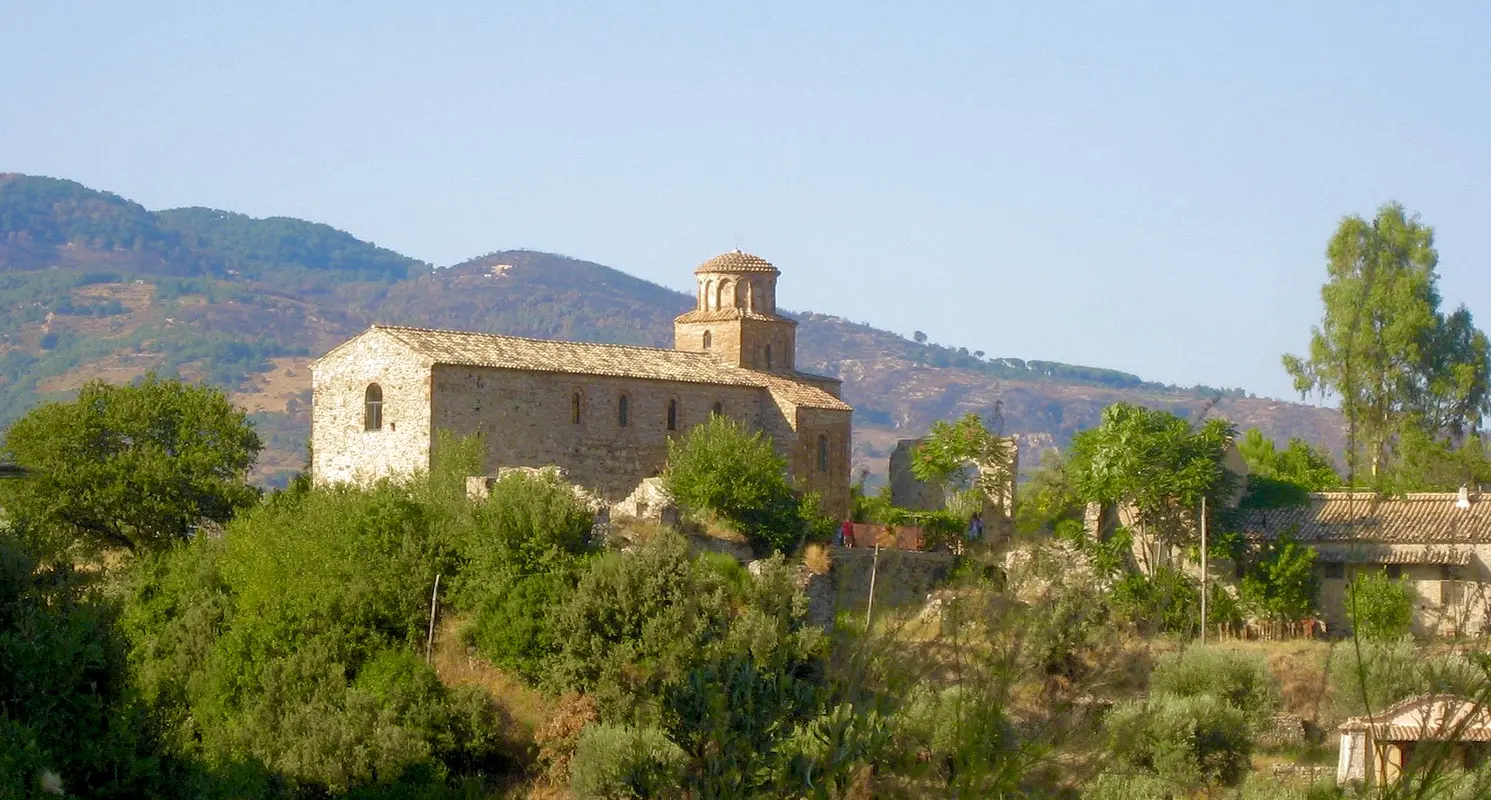SHARRYLAND















The Monastery of St. John Theristis
Extraordinarily evocative place, taking the visitor back to the time of the first Byzantine religious communities



Where

A destination in a timeless dimension
The monastery of St. John Theristìs, which is also sometimes referred to as San Giovanni Vecchio, is located at the end of the winding road from Bivongi (m 270) up the northern slope of the Stilaro valley to the 415-meter elevation of the confluence with the Assi valley. A lonely place, against the backdrop of a rugged mountain environment of extraordinary beauty, which in some ways anticipates the history of the ancient religious complex. What remains of it is basically the church, an important transitional architecture between Byzantine and Norman forms, which in recent years underwent a complete restoration that allowed the resettlement of the Orthodox community that still officiates there.
The Norman ruler and the thaumaturge monk
The monastery traces its origins to a Basilian hermitage that in the late 11th century gained fame and became a pilgrimage destination thanks to St. John Teresti (995-1054) a monk who emigrated from Sicily following the Arab invasion and spent much of his life there. It was the Norman Roger I, who had experienced its thaumaturgic abilities, who wanted a church worthy of such devotion. All was for the best, until the 15th century, when the coenoby went through increasing vicissitudes that in the long run culminated in the suppression of the religious body at the behest of Napoleonic authority. Passed into private hands, reduced to agricultural uses, the complex within a century was reduced to the state of ruin in whichmedieval archaeologist Paolo Orsi found it in the early 20th century.
The long-awaited return of an Orthodox community
The most recent history of the monastery concerns the resettlement of an Orthodox community. Despite the best auspices, it took nearly a century after its rediscovery for the question of its return to worship to become topical again. Once the restoration work was completed, a no less crucial step, the area between the Stilaro and Assi rivers was consecrated, so that in 2008 it was possible to entrust the monastery to the Romanian Orthodox Church in Italy. Thus the interior of the church today is once again rich in icons, paintings, frescoes and sacred furnishings such as the iconostasis, or the partition decorated with sacred images between the hall and the chancel, or the chandelier in the nave, with a base of twelve sides, on each of which an apostle is depicted.
The miracle of the holy reaper
The interior of the church contains a series of frescoes, some of which date back to the time of its construction. It is among these murals that the oldest depiction of St. John Theristis can be recognized . Although marked by time, he can be recognized by his habit , the rough cloth monk's habit, an outward sign of his choice of life in poverty. An additional attribute, the sickle, often recurs in the iconography of this saint. From hagiography it is clear why: for it is said that reapers, returning to the fields after a furious thunderstorm, found the grain miraculously saved, gathered in sheaves through John's intercession. Hence the appellation Theristis, from the Greek word for reaper.
The dome, a constructive virtuosity
The church's dome, surely themost characteristic element of the building, deserves double attention. From the outside, it is immediate to associate its shape and decoration with those of other Byzantine buildings, such as the Cattolica of Stilo and the Roccelletta of Squillace. From the inside, then, one appreciates itsarticulated structure, set as it is on four pillars and as many arches, supporting a volume that is at first cubic, then octagonal and finally cylindrical, on which the lowered vault of the dome is grafted. In its genre, a true constructive virtuosity.
Enter the Map of Italy's Undiscovered Wonders and find treasures where you least expect it... Inspire, Recommend, Share...
The Map thanks:
PSC 2014-2020 del Ministero del turismo - Avviso “Montagna Italia” - Progetto le Montagne del sole - Codice CUP J38J22000450008


